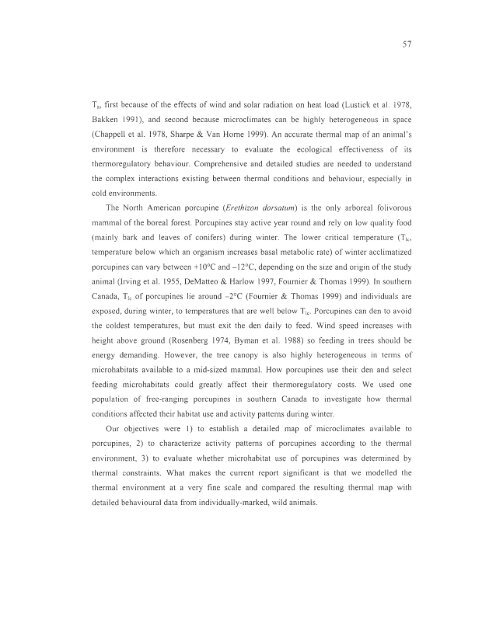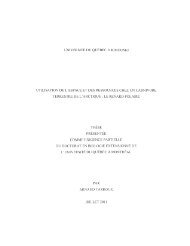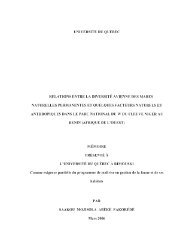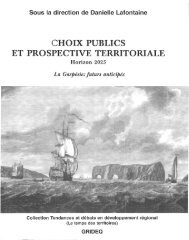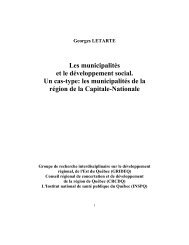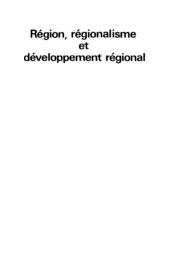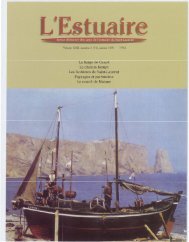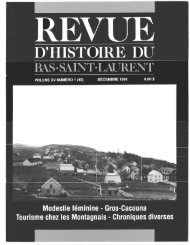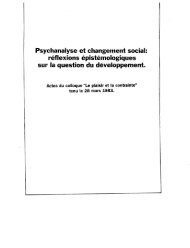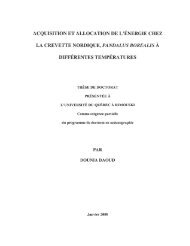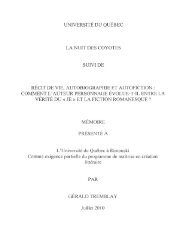influence du climat et de la prédation sur l'utilisation de l'habitat et la ...
influence du climat et de la prédation sur l'utilisation de l'habitat et la ...
influence du climat et de la prédation sur l'utilisation de l'habitat et la ...
Create successful ePaper yourself
Turn your PDF publications into a flip-book with our unique Google optimized e-Paper software.
57<br />
Ta, first because of the effects of wind and so<strong>la</strong>r radiation on heat load (Lustick <strong>et</strong> al. 1978,<br />
Bakken 1991), and second becallse micro<strong>climat</strong>es can be highly h<strong>et</strong>erogeneolls in space<br />
(Chappe Il <strong>et</strong> al. 1978, Sharpe & Van Horne 1999). An accurate thennal map of an animal's<br />
environment is therefore necessary to evalliate the ecological effectiveness of its<br />
thennoregli<strong>la</strong>tory behaviollr. Comprehensive and d<strong>et</strong>ailed stlldies are nee<strong>de</strong>d to lIn<strong>de</strong>rstand<br />
the complex interactions existing b<strong>et</strong>ween thermal conditions and behaviour, especially in<br />
cold environments.<br />
The North American porcllpme (Er<strong>et</strong>hizon dorsatum) is the only arboreal folivorous<br />
mammal of the boreal forest. Porcupines stay active year round and rely on low quality food<br />
(mainly bark and leaves of conifers) dllring winter. The lower critical temperatllre (Tic,<br />
temperature below which an organism increases basal m<strong>et</strong>abolic rate) of winter ac<strong>climat</strong>ized<br />
porcupines can vary b<strong>et</strong>ween + 1 aoc and -12°C, <strong>de</strong>pending on the size and origin of the study<br />
animal (Irving <strong>et</strong> al. 1955, DeMatteo & Harlow 1997, Fournier & Thomas 1999). ln southern<br />
Canada, Tic of porcupines lie around -2°C (Fournier & Thomas 1999) and indivi<strong>du</strong>als are<br />
exposed, <strong>du</strong>ring winter, to temperatures that are well below Tic. Porcllpines can <strong>de</strong>n to avoid<br />
the col<strong>de</strong>st temperatures, but must exit the <strong>de</strong>n daily to feed. Wind speed increases with<br />
height above ground (Rosenberg 1974, Byman <strong>et</strong> al. 1988) so feeding in trees sholild be<br />
energy <strong>de</strong>manding. However, the tree canopy is also highly h<strong>et</strong>erogeneous in terms of<br />
microhabitats avai<strong>la</strong>ble to a mid-sized mammal. How porcupines use their <strong>de</strong>n and select<br />
feeding microhabitats could greatly affect their thermoregu<strong>la</strong>tory costs. We used one<br />
popu<strong>la</strong>tion of free-ranging porcupines in southern Canada to investigate how thennal<br />
conditions affected their habitat use and activity patterns <strong>du</strong>ring winter.<br />
Our objectives were 1) to establish a d<strong>et</strong>ailed map of micro<strong>climat</strong>es avai<strong>la</strong>ble to<br />
porcupines, 2) to characterize activity patterns of porcupines according to the thermal<br />
environment, 3) to evaluate wh<strong>et</strong>her microhabitat use of porcupines was d<strong>et</strong>ennined by<br />
thermal constraints. What makes the cUITent report significant is that we mo<strong>de</strong>lled the<br />
thermal environ ment at a very fine scale and compared the resulting thennal map with<br />
d<strong>et</strong>ailed behavioural data from indivi<strong>du</strong>ally-marked, wild animais.


